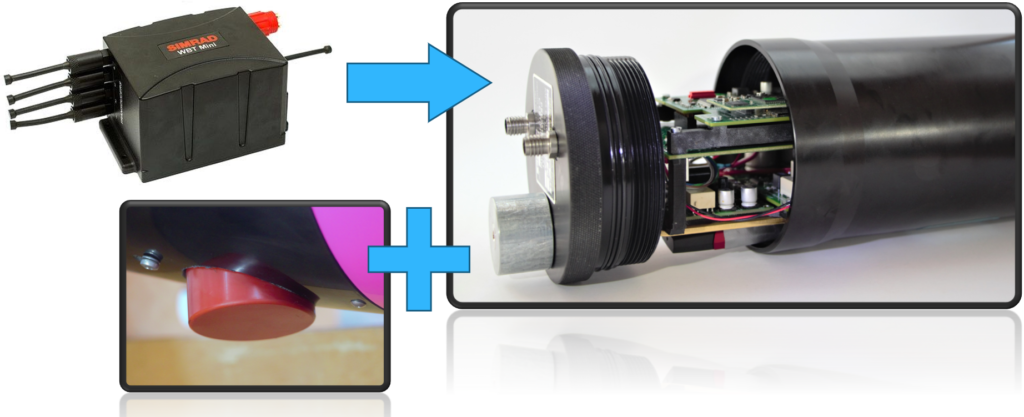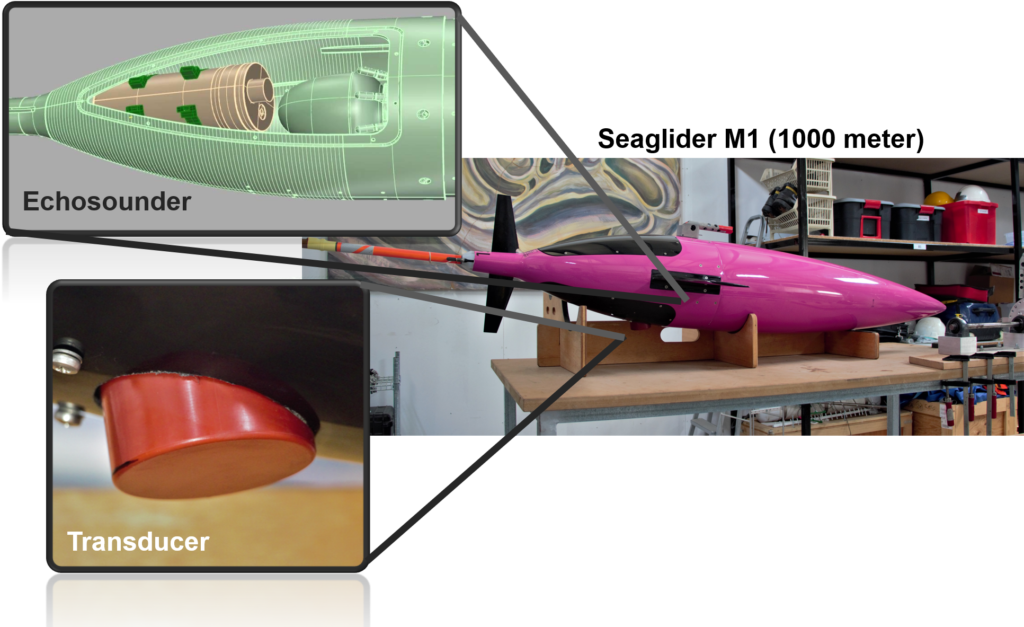The DeepEcho Module is the first scientific wide-band echosounder – deployable to a depth of 1000 meters – successfully integrated onto an ocean glider. From copepods, krill and fish larvae to micro and macronekton, including fish, scientific echosounders identify and quantify components of the marine ecosystem on a range of scales. Such echosounders also identify gas bubbles in the water column, from seafloor seeps of CO2 or CH4 to leakages from subsea infrastructure.
CSCS redesigned the compact version of SIMRAD EK80 wideband transceiver (WBT) echosounder in order to fit within the M1 Seaglider payload bay. By reconfiguring the WBT electronics and placing them in a different geometrical configuration, these electronics fit into a cylindrical aluminum pressure housing. In addition to this reconfiguration, the design includes a 333 kHz or 200 kHz single-beam transducer further streamlining the design by eliminating the need for one of the processing cards.

Seagliders and their payloads can efficiently and effectively map the oceans and their ecosystems. Steered by pilots on shore, gliders profile the ocean interior in sawtooth-shaped patterns for months at a time. They are inherently acoustically and electrically quiet, facilitating high-quality acoustic data with low levels of noise. Along with the integrated DeepEcho Module’s acoustic measurements, gliders concurrently profile the environmental for a number of parameters (i.e., temperature, salinity, dissolved oxygen, fluorescence of chlorophyll-a, colored dissolved organic matter, vertical currents, etc.). Unlike ships, the DeepEcho module-equipped Seagliders reach a wide range of depths effectively and efficiently.

Tests in the Mediterranean Sea & Beyond
On 5 June 2019, Cyprus Subsea successfully tested the DeepEcho Module on an M1 SeaGlider off the coast of Limassol, Cyprus.
Experiments for detecting seafloor seeps are being planned – in addition to surveys in the Norwegian Sea to estimate biomass in the mesopelagic zone.
